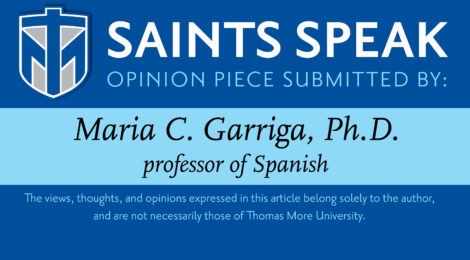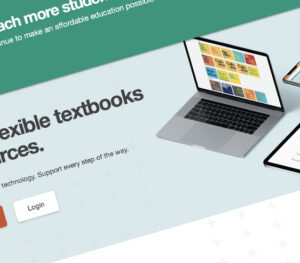
Open Educational Resources benefit or boon?
SUBMITTED BY MARIA C. GARRIGA, PH.D., PROFESSOR OF SPANISH
The academic leadership team and faculty at Thomas More University investigated the use of Open Educational Resources (OER) during the spring semester of 2020. Adopting OER advances equity and accessibility for students, facilitates curricular adaptations through the customization of course materials, and promotes sustainability efforts at educational institutions. When faculty members adopt OERs, students see a direct reduction in course material costs. Of course, the adoption of OER resources involves many stakeholders: faculty, academic support offices, academic leaders, librarians, and instructional designers.
Ideally, OERs are first adopted for lower-division core curriculum courses that impact a large number of students. In recent national dean group discussions, physics, anatomy and physiology, mathematics, English, history, and political science have proven early adopters. At Thomas More University, however, the department of psychology has taken the lead on the development of OERs.
In summer 2021, the psychology faculty piloted the use of an OER text for two general psychology courses. The department has focused on choices that are free to students, of high quality, accessible, that provide teaching resources (PowerPoints and test banks), are customizable, and easily integrated with Canvas (Thomas More’s learning management system).

The choices were narrowed to Openstax and Noba. Both are free and highly rated on accessibility and Canvas integration. Each of them provides options for students to print a physical copy of the text for a low cost and also provide a pdf version of the text for free. Textbook chapters could be directly linked in Canvas without requiring students to log into an external site.
One downside to both Noba and Openstax was that their testing banks each needed tweaking and expansion. Ultimately, the psychology faculty chose Noba because it was slightly more customizable, and the text was written by high-profile psychologists and created specifically for the discipline.
Looking forward, psychology aims to create a Canvas resource for those faculty members using the OER text that allows for instructions on how to customize textbooks and test banks. The plan is to add to existing test banks and build video resources and online activities all instructors can access and use. Ultimately, while OER texts can be harder to set up, they provide high-quality textbooks at no cost to Thomas More University students. Assessing the impact of OER adoption will be key to expanding use of OERs in other courses. We hope that more departments will explore OER resources in future.
______________________________________________________________________________
OER – what is it? – OER or Open Educational Resources are digital contents used for teaching/learning purposes. They are released under open intellectual property licenses to enable their free use or repurposing. These resources may include full courses of academic programs or specific learning materials such as textbooks, lessons, lectures, assessments, and tests.

Comments are closed, but trackbacks and pingbacks are open.